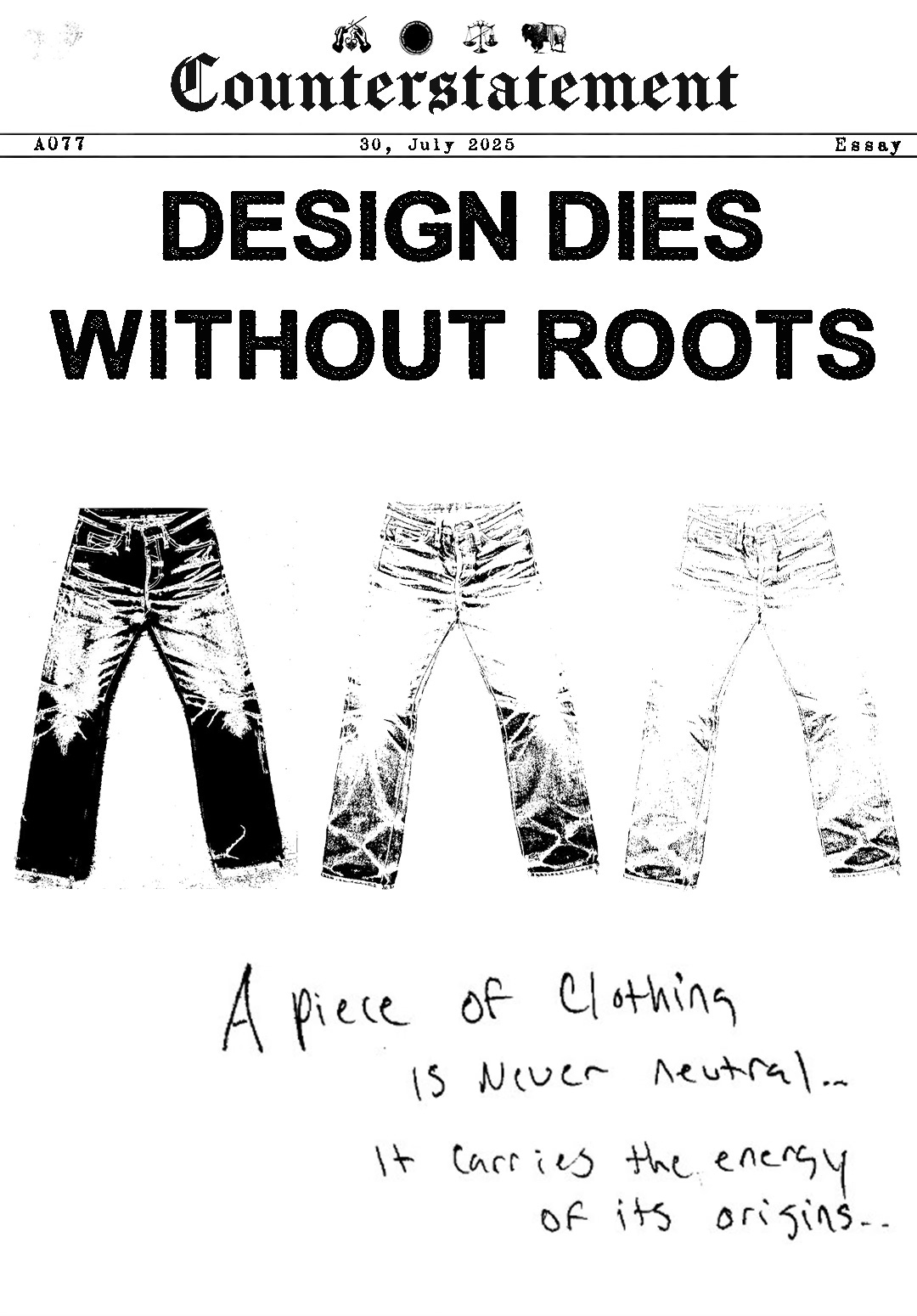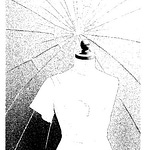Why Roots Matter in Design
Authenticity in design isn’t about simply copying how something looks, it’s about understanding the story and meaning behind what you’re referencing. Too often, designers will pull from a photo, a piece of art, or an aesthetic mood board and replicate the surface of it without ever asking what made that image or object powerful in the first place. A cowboy boot, a diner booth, or a pair of jeans isn’t just a “look,” it’s a cultural artifact, shaped by necessity, history, and the lives of the people who used it. When you strip away that depth and reduce these symbols to decorative shorthand, the result is hollow. It becomes a performance of meaning rather than meaning itself, and that’s the problem with much of modern design, it borrows the skin of culture without understanding its bones.
Take denim as an example. Its cultural weight is inseparable from its origin as the uniform of miners, railroad workers, and ranch hands. When Hollywood transformed denim into the uniform of the outlaw, from John Wayne’s cowboys to James Dean’s rebels, the image resonated because it still carried the memory of real labor, grit, and survival. Today, when designers treat denim as just another blue fabric, they risk erasing the very thing that made it iconic, its function as a second skin for those who built America.
Ironically, it’s Japanese brands that have preserved this truth better than America itself. Kapital and Visvim approach American workwear with an almost spiritual reverence. They dissect vintage Levi’s, replicate the original shuttle looms, and even study how a pair of jeans fades after years of hard use. The result is not a nostalgic imitation but a living preservation of the garment’s soul. In many ways, these Japanese interpretations feel “more American” than the mass-produced Levi’s sold in U.S. malls because they honor what the U.S. has neglected, an understanding of the roots.
What Reverence Adds to Design
Reverence for aesthetic language transforms a garment from a product into a vessel of meaning. When a designer understands the roots of a piece, its cultural, historical, and emotional context, that knowledge is transmuted into the fabric itself. The garment becomes more than clothing; it becomes a continuation of the story it references, carrying with it the emotional charge of its origins.
This depth is what makes the work of brands like Kapital and Visvim so powerful. By dissecting vintage Levi’s stitch by stitch and recreating the methods that shaped them, they are not just copying the past, they are evolving it. Their jeans feel alive because every decision, from the weight of the fabric to the way it fades, is informed by a dialogue with history. This process doesn’t limit innovation; it fuels it. By knowing the DNA of what made a garment iconic, they can push it further while staying true to its essence.
Dries Van Noten exemplifies how a designer can wield artistic and cultural references without reducing them to hollow aesthetics. His collections often draw from global textiles, historical patterns, and fine art, from the electric monochromes of Yves Klein to intricate tribal embroideries, yet he never stops at the surface. Instead, he dissects the philosophy, symbolism, and craftsmanship behind these references, allowing their essence to inform both the narrative and construction of his garments. His work becomes a dialogue between past and present, a translation of cultural memory into modern form. This sensitivity and respect for the source material give his collections a layered resonance; they feel alive because they carry the weight of the stories they reference, rather than simply borrowing their look.
Where many designers lazily strip-mine culture for aesthetics, Dries Van Noten proves what happens when you actually respect the roots of your reference. He doesn’t slap Yves Klein blue on a dress and call it inspiration; he unpacks the philosophy behind the color, the tension it creates, the way it commands space. He doesn’t copy tribal embroidery for its “ethnic vibe”; he studies its patterns like a language of memory, rebuilding them in modern form without hollowing out their meaning. In an industry obsessed with surface, Van Noten’s work stands apart because it refuses to be decorative shorthand, it’s design that understands the bones of what it borrows.
Clothes made with this kind of intentionality carry a presence that can’t be faked. You can feel it, the weight of care, the thought behind every decision, the sense that the designer understood not just what something should look like, but why it should exist. This is what separates an iconic piece from a trend-driven item. It doesn’t just catch the eye; it speaks to memory, identity, and emotion.
Reverence for the roots of a design doesn’t trap a designer in the past, it sharpens their ability to create work that feels modern, powerful, and timeless. When you understand the story behind an aesthetic, you’re not copying it; you’re wielding it with precision, using its history and symbolism as creative fuel.
Without roots, reinvention collapses into pastiche, clever on the surface but hollow underneath. With roots, design gains philosophical weight. It becomes more than just fashion or product; it becomes a conversation with history, a continuation of the narratives that gave those aesthetics meaning in the first place












